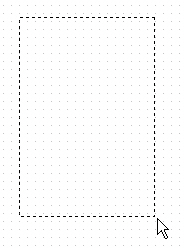

As the name suggests, they are focused on the system’s underlying structure.
CREATE SWIMLANES IN STARUML SOFTWARE
Structural diagrams represent the static aspect of the software system.

A quick look at the 2 main types of UML diagrams We’ll then take a look at a few other examples and finish by discussing how you can use your diagrams to drive productivity in your organization. In this post, I’m going to provide a brief overview of the 2 main types of UML diagrams, explain why the activity diagram works best for process modeling, and walk you through a step-by-step guide to modeling processes with activity diagrams. – Business Modeling with UML: A Business Process Centred Architecture Using UML to align the work of software developers and business analysts has proven beneficial for product development.īy having the business analyst and system developers using the same modeling concepts, the risk of costly errors related to different understanding of methodology concepts is significantly mitigated. This is because UML was not originally created to model business processes, it was purely a software development tool until it became apparent that a small set of diagrams, one in particular, can also be used to effectively model business processes. Thankfully, the application of UML in process modeling is significantly limited in how complicated it can be in comparison to its application in software engineering or development. This may seem obvious, or trivial, but the tendency for diagrams to get overwhelming and confusing is repeatedly cited as being a significant drawback of using UML. The short answer is so that people reviewing and implementing the processes are not unnecessarily confused and prone to misunderstanding information. So, why is keeping things simple important when using UML to model business processes?
CREATE SWIMLANES IN STARUML SERIES
The use of UML in business process modelingīusiness process modeling is the act of documenting the series of steps and actions taken within a business process.


I find this to be particularly important when it comes to modeling business processes, which is going to be the focus of this post. So, the key takeaway from that, at least as I see it, is to keep things as simple as possible when planning and creating UML diagrams. “Seriously, you need about 20% of the UML to do 80% of the kind of design you might want to do in a project – agile or not – but use the UML with a very light touch: use the notation to reason about a system, to communicate your intent to others…and then throw away most of your diagrams.” – Grady Booch In fact, one of the men who created the language believes it should be used rather casually. “UML specification is a huge book (732 pages), the UML metamodel is large and quite complex, and the definition and the understanding of its static and dynamic semantics is a truly difficult task, with also the consequence to make difficult to teach it both at the school/university level or in the industry (Grossman et al., 2005).” – What Are the Used Activity Diagram Constructs?ĭespite its complexity, UML does not need to be leveraged in a complicated fashion for it to be useful. Just read a small portion of the introduction from this academic research paper: It is also widely accepted that UML is incredibly complex. Since it was created in 1994 by Grady Booch, Jim Rumbauch, and Ivar Jacobson, a tremendous amount of information has been created to explain the vast capability of its application in software development. Nevertheless, it can sometimes be overwhelming.Ī focus on simplicity is, therefore, essential to not only creating actionable diagrams, but also to avoid pulling your hair out in the process!įinding simplicity in complexity is the way to goīefore we dive into this tutorial we must acknowledge that UML is a huge topic. UML has many advantages including flexibility, an abundance of tools, and the capacity to model systems from both a structural and behavioral perspective. “The Unified Modeling Language (UML) was created to forge a common, semantically and syntactically rich visual modeling language for the architecture, design, and implementation of complex software systems both structurally and behaviorally.” – Lucidchart, What is Unified Modeling Language If you’re looking for a full-winded definition, here it is: That is perhaps the simplest way to define it. Universal Modeling Language (UML) is a way of visualizing a software program using a collection of diagrams.


 0 kommentar(er)
0 kommentar(er)
